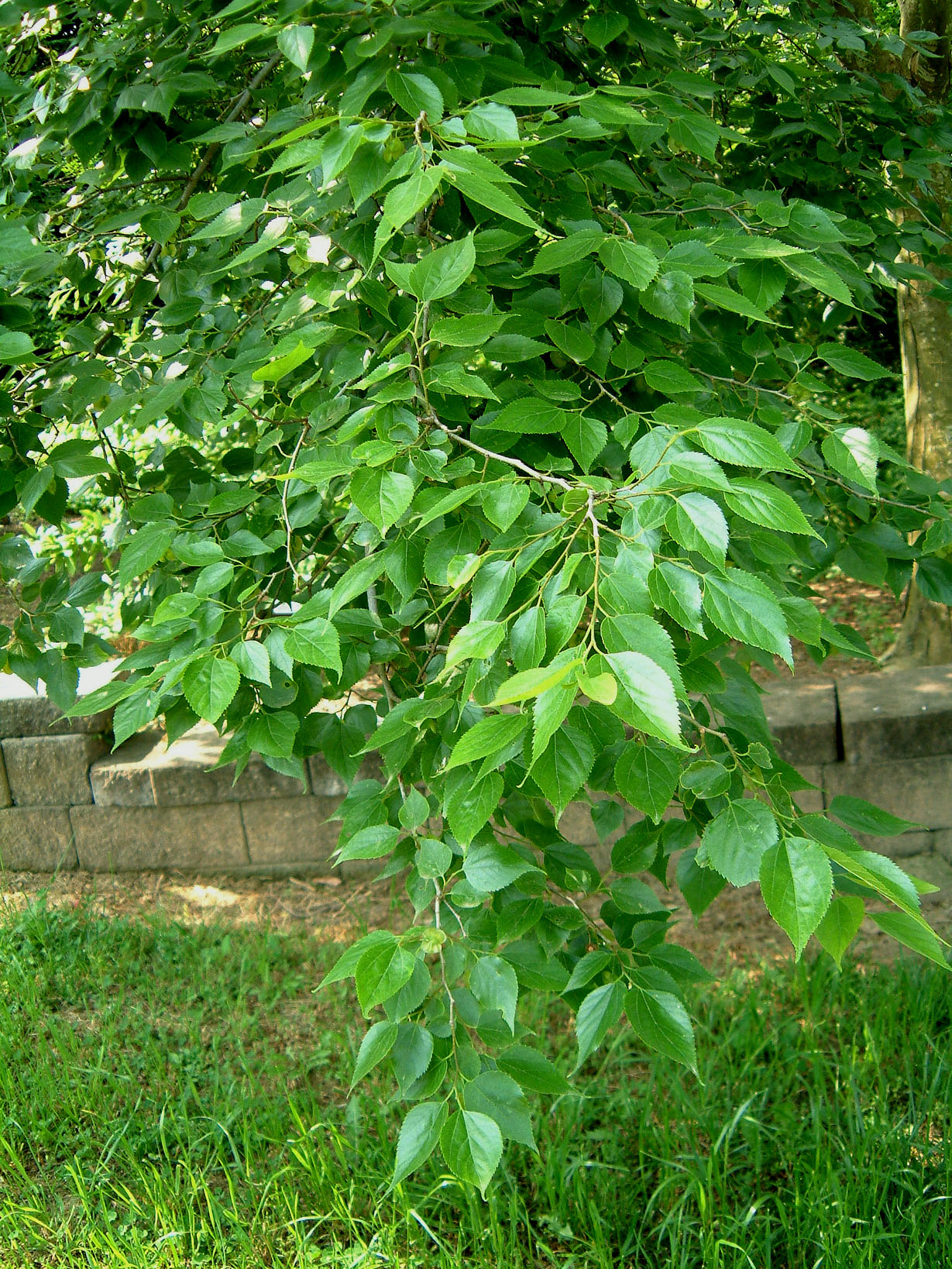| NOS PTEROCELTIS PAGE |
Copyright
2003. New Ornamentals Society. All Rights Reserved. Lawful for online access only by current society members. All downloading, printing, saving to media, or offline use is prohibited. Do not link to this page. |
|
Why does one want or
need Pteroceltis tartarinowii when there are some good
Celtis around? For one thing it is rare in North America and that
is enough for some of us. For another reason, it tends to be darker and
more glossy in leaf than hackberries and not a pale, matt finish.
Thirdly, older trees (30 years and up it seems) have a creamy-brown or
grayish exfoliating bark of some merit. The trees at the Raulston
Arboretum do not yet have bark worth noticing so perhaps they are not
old enough at just 15-20 years. If anything, it seems to have all the
toughness of a hackberry with literally and architecturally more polish.
Height is 30-40 feet high and wide. It roughly globose but like the Celtis cousins tends to have uneven and vigorous tendencies even if not as much suckering. Good training in youth is good for an member of the elm family and one may learn to regret any uncorrected trends or end up paying the tree climbers half your annual mortgage. It's not ready in species form to be a street tree but a narrow, neat cultivar might be. With it's raw, wild dimensions it needs a big lawn or wood to be in scale. Taxonomically, it differs from other plants in the family in having unisexual flowers. The secondary veins also curve and the anthers are apically pubescent. The fruit has definate wings but so do the elm cousins. True Celtis are not winged. Thrill of thrills. The "winged celtis" or "winged hackberry" is a plant of economic interest since it is a major paper and fiber tree in Asia. I even found a reference on the internet to some of Rembrants etchings being done on paper from this species. Some people just call it the "wing celtis". Hardiness is zone 5 and perhaps 6 at times. Dirr reports it roots badly from cuttings (6%) so seed might be the best approach for getting a field full of them for making paper someday. It's frightfully common in Asia and no doubt they'll part with seed as easily as we would with boxelder samaras. Most folks just order from Forest Farm ($6.95) or another good nursery. It is a native of China and has a reputation for taking heat and drought. Is is therefore of some interest for the western and southeastern US states where such durability with limited watering is becoming increasingly important. If Celtis can have a few cultivars, surely this superior genus deserves a good selection program. Write us when you have something. LCH |
